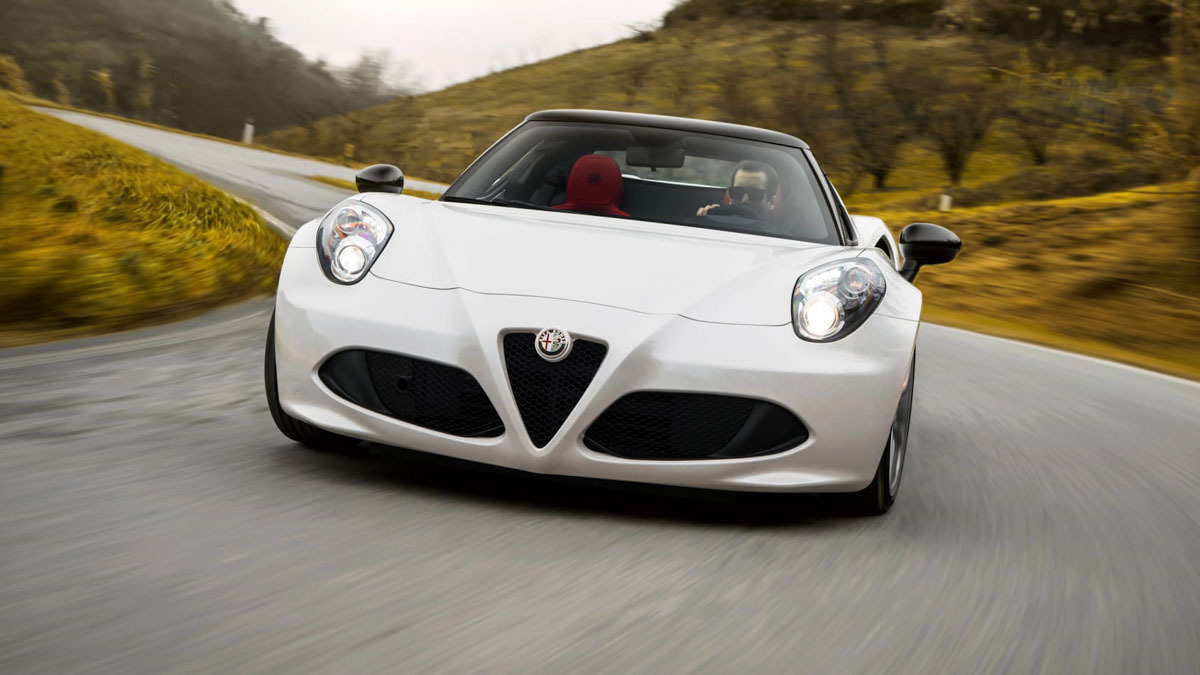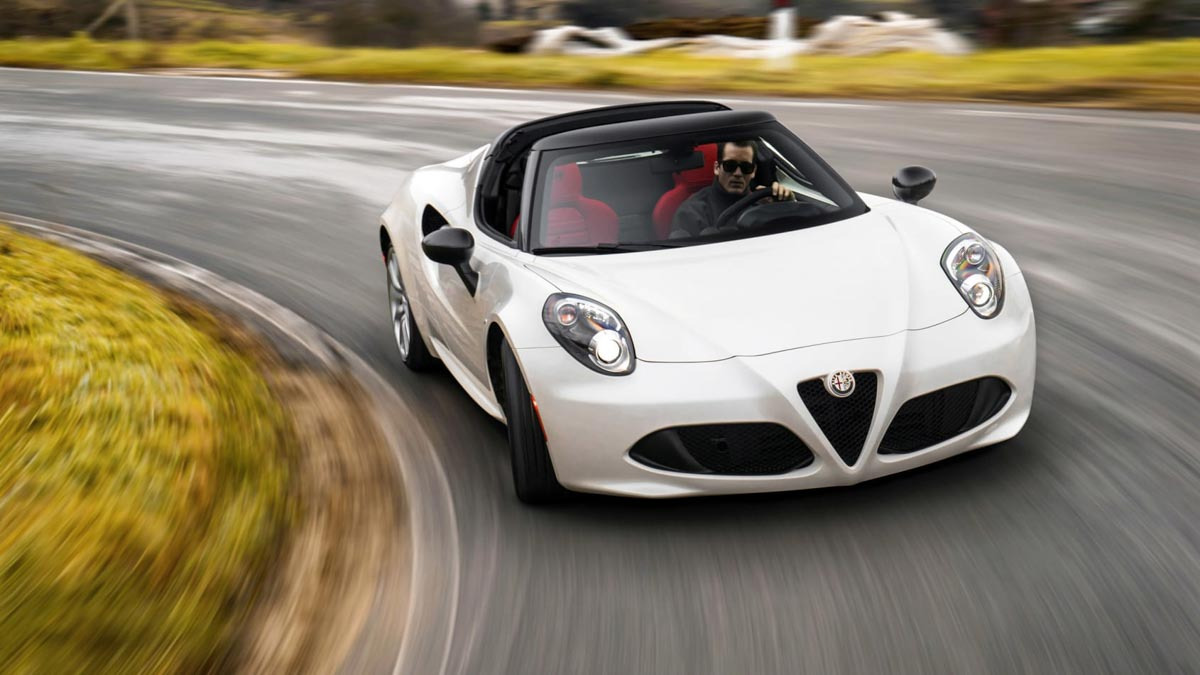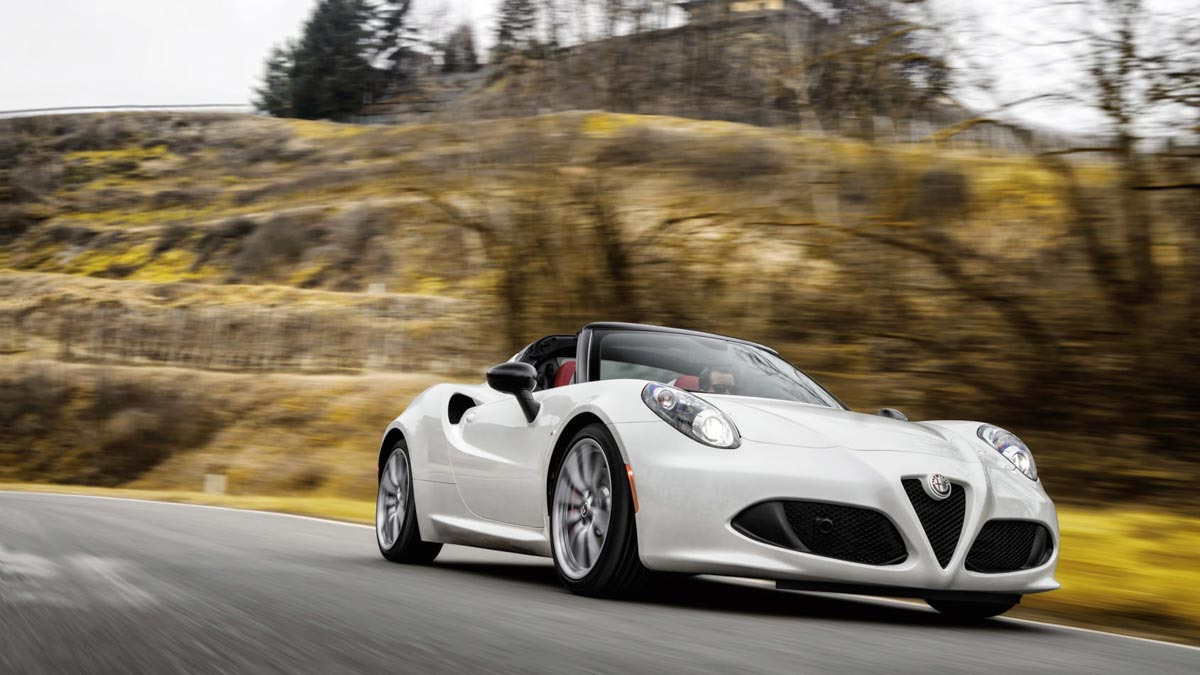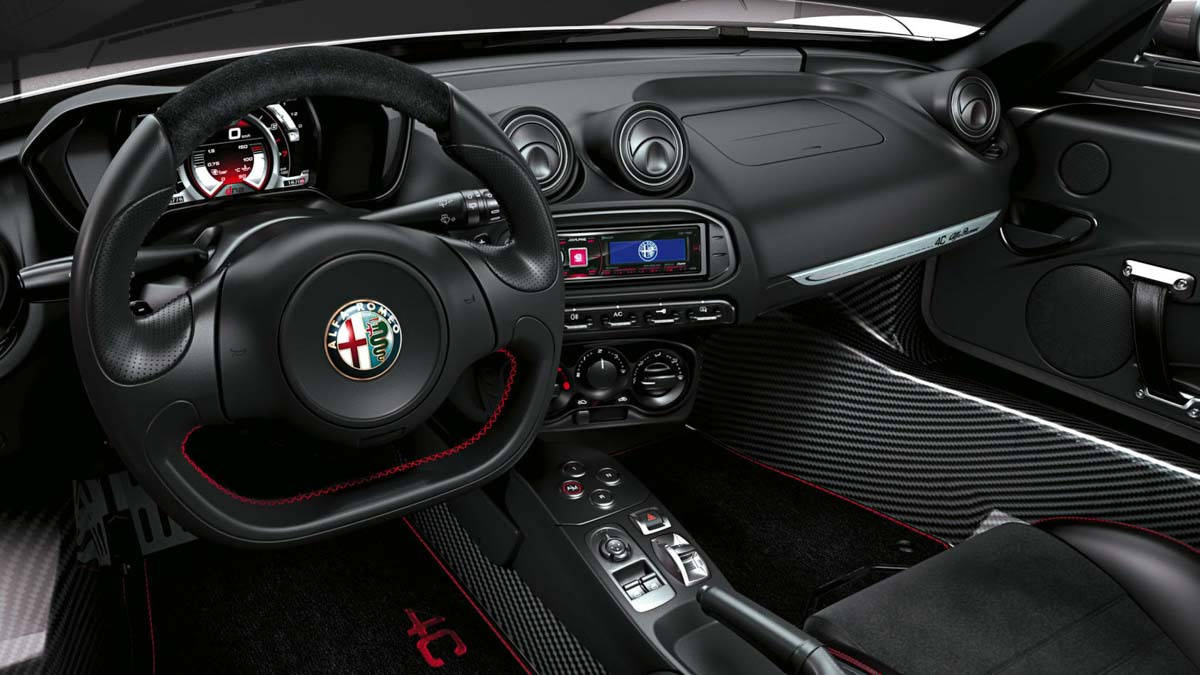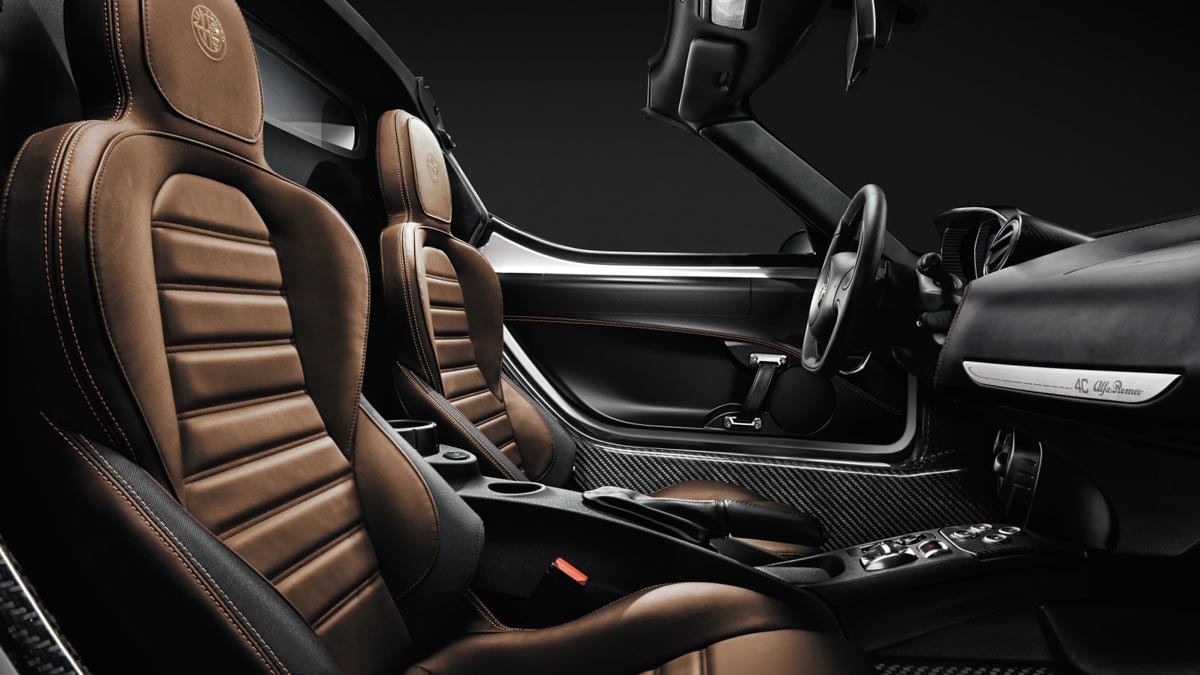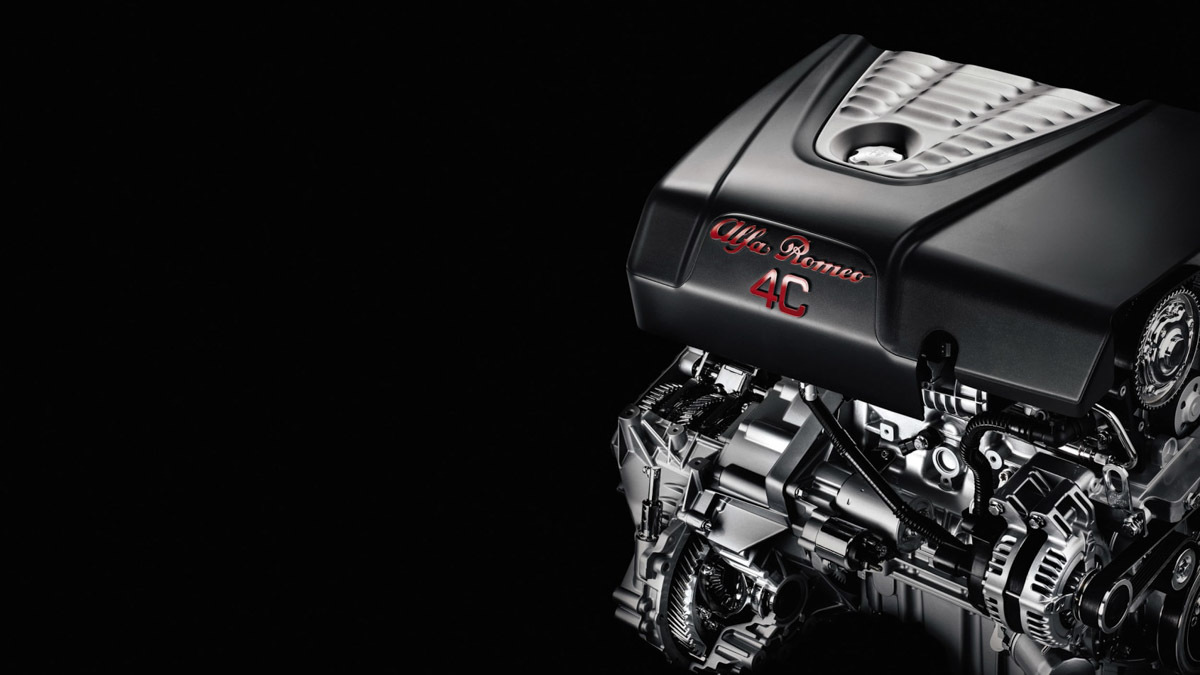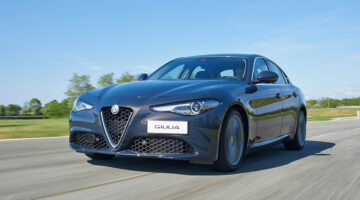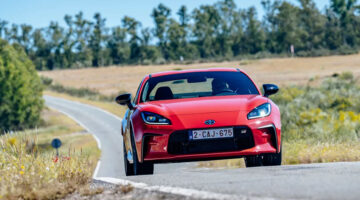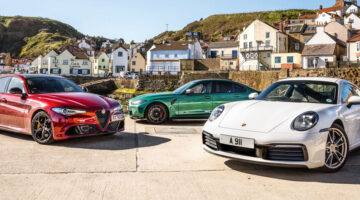Removeable roof and styling tweaks add a new layer to the 4C’s appeal, but the Spider is still a flawed sports car
| Exotic styling, light weight, performance | |
| Less than exotic engine, busy chassis, gearbox |
PRICE : $73,815
The Alfa Romeo 4C had a tough introduction to market, it must be said. Heralded as a return of the small, lightweight and relatively affordable sports car, with stunning supercar-in-minature styling underpinned by a carbonfibre-tub chassis and clever powertrain it was everything the enthusiast wanted. It went so far as to be compared to the Lotus Elise, with assistance-free steering and a sub-1000kg kerb weight, but oh how it went so incredibly wrong.
The original 4C coupe, despite all the right ingredients, was so poorly executed that it couldn’t hope but be ripped to pieces by both the motoring media and prospective buyers alike. The Spider was Alfa’s rebuttal, a heavily revised update that not only partially removed the roof, but also fix the issues many felt made the coupe so disappointing.
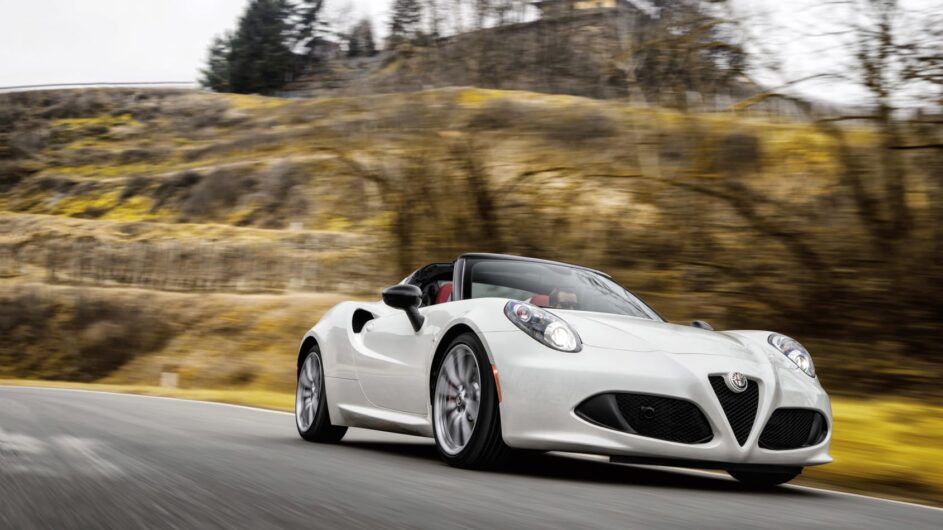
Prices, specs and rivals
The Alfa Romeo 4C Spider starts at $73,815 on the road, which is $10,000 more than the coupe. The difference can be accounted for not only in the Spider’s roof arrangement but also the subtle visual changes and the extra equipment inside. Mechanically though it’s identical to the coupe, retaining the turbocharged, 1742cc four-cylinder with its 237bhp and 258lb ft power and torque outputs and six-speed dual-clutch transmission.
While this layout provides plenty of performance, some buyers might be disappointed that it’s not particularly exotic – $75,000 buys the new Porsche Boxster Spyder with a 3.8-litre, six-cylinder engine that’s more becoming of the price tag.
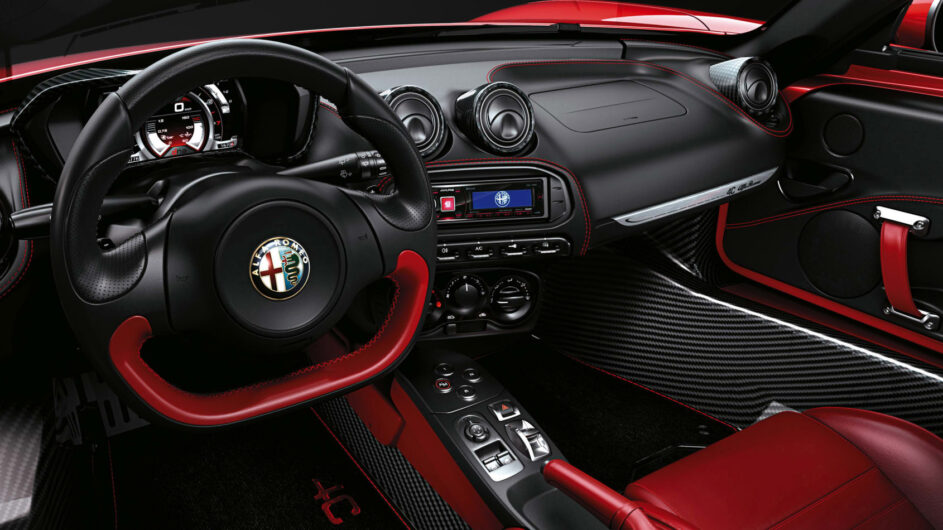
While the Boxster is heavier than a 4C, its extra 133bhp and 52lb ft of torque ensure it springs to 100kph in the same 4.5sec as the 4C Spider (only with a more mellifluous exhaust note, courtesy of natural aspiration and the extra pair of cylinders) and reaches 290kph.
Another alternative is the brilliant Lotus Exige Sport 350. It’s even more focused than the carbonfibre-tubbed Alfa, but it’s a more satisfying drive, even quicker (3.7sec to 100kph, 273kph) and less expensive too, at $69,350. Depending on your level of dedication, you might be less inclined to use it every day (though the 4C’s busy chassis doesn’t make daily driving easy and the Sport 350 is even better than its Exige S forebare), but it ultimately succeeds where the 4C fails.
evo Verdict
Early signs are positive that the Alfa Romeo 4C Spider is an improvement over the less than impressive 4C Coupe we’ve reviewed previously. Detail changes to the steering and suspension and a change in weight distribution mean that, in standard specification at least, the Spider experience is lighter, less corrupted and more flowing than its coupe equivalent.
It’s still not perfect however, becoming unsettled as the road becomes cambered or the surface broken and vexing with its tardy, boosty throttle response and slow reactions to tugs on the gearshift paddles. The parpy exhaust note is entertaining in moderation, if not as cultured as those of six-cylinder rivals from Porsche (Boxster Spyder) and Lotus (Exige Sport 350), and the styling will always be a highlight.
The Spider’s extra cost over the coupe might deter you, but it’s so far the best version of the 4C we’ve tried. It’s just a pity it’s not even better.
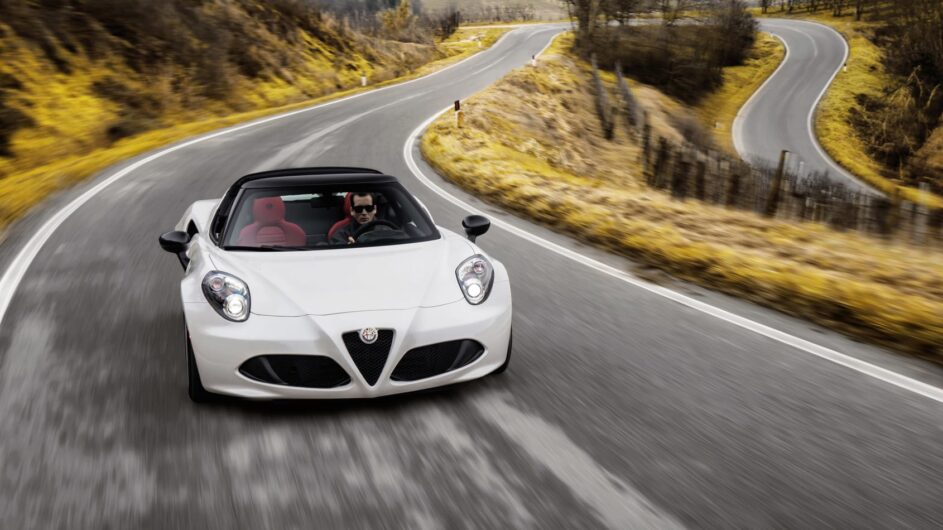
evo Tip
Avoid the Racing chassis option. For a start, eschewing the upgraded suspension, rear anti-roll bar and uprated front anti-roll bar will save you $1550 (more if you also go without the $1300 racing tyres and $1675 larger alloy wheels), but it’ll also make the 4C just a little more fluid on twisty roads. You might lack the driveway kudos of the 18in front and 19in rear alloys (the standard wheels are 17in up front and 18in at the back), but it helps you work with the chassis a little more and doesn’t punish as harshly on rougher surfaces.
evo Comment
‘The 4C is busy across the road. It finds cambers and ruts that just don’t trouble its rivals, so the unassisted steering tugs this way and that. There’s a responsiveness and a very real sense of rigidity in the tub, but the damping doesn’t allow the car to breathe with the road surface. You find yourself tensing up to keep the car pointing straight, fighting the chunky steering to get it turned in and trying to guess if it’ll oversteer or push on.’ – Dan Prosser, Road test editor.
Performance and 0-100 time
Bar the odd fraction, the Spider is as impressively quick as the Coupe. With the aid of Launch Control, the Spider will punch from 0-100kph in a claimed 4.5sec and hit a 257kph top speed. That’s serious performance from a sub-2-litre, sub-$62k sports car.
With 237bhp, the engine is at least effective and imbues the little Alfa with decent, if noticeably turbocharged, pace in a straight line. Immersed in the process of threading the car down the road, you don’t really notice the questionable sound it’s making, so it’s less of a problem. That sound is undeniably characterful and effective, albeit in a rather hot hatchy manner that’s at odds with the 4C’s baby-exotic brief and obvious class.
Still, on the right road with its dual-clutch, paddle-fed motor hauling back the high numbers on a ball of relentless, on-boost energy, the 4C Spider can be a lot of fun. The healthy reserves of mid-range torque, coupled to the swift reflexes of the TCT transmission, make for near-seamless surges of acceleration that soon see you travelling at three-figure speeds between the corners.
Engine and gearbox
The engine – Alfa’s familiar turbocharged, direct-injection 1742cc four-cylinder petrol motor – is some 22kg lighter than that found in the Giulietta, thanks to a new cast aluminium block in place of the regular cast iron item. Tuned to deliver a peak of 237bhp at 6000rpm and a fat 258lb ft of torque between 2200 and 4250rpm, it trades top-end effervescence for low- and mid-range accessibility.
For the Spider there’s now a choice of three exhaust systems – standard (loud), racing (very loud) and, at extra cost, Akrapovic, which has a switchable valve giving a choice between the two volume settings. With the Race Pack’s exhaust fitted, the 4C is very noisy, emitting a hollow, resonant fwaarp that’s two parts Fiat 500 Abarth Esseesse and one part Ferrari 458 Italia at less than stratospheric revs. It’s mated to Alfa’s six-speed TCT dual-clutch paddleshift transmission.
Ride and handling
Compared to the 4C Coupe, there are detail changes to the front suspension and steering and a marginal shift in weight distribution (40:60 versus 35:65 for the Coupe). Whatever Alfa’s chassis engineers have done has improved the steering. It’s still quite heavy (much heavier than that of an Elise), moves about in your hands and kicks back over ruts and transverse ridges.
However, the steering is much more consistent than in earlier 4C Coupes, weighting up progressively with speed and sending back a less corrupted, more coherent picture of what the front wheels are doing. It’s better appreciated in the more softly-sprung, smaller-wheeled ‘comfort-spec’ Spider, which also does away with the rear anti-roll bar and adds a degree of suppleness and flow to the process, whereas the full-on car is more of a fight.
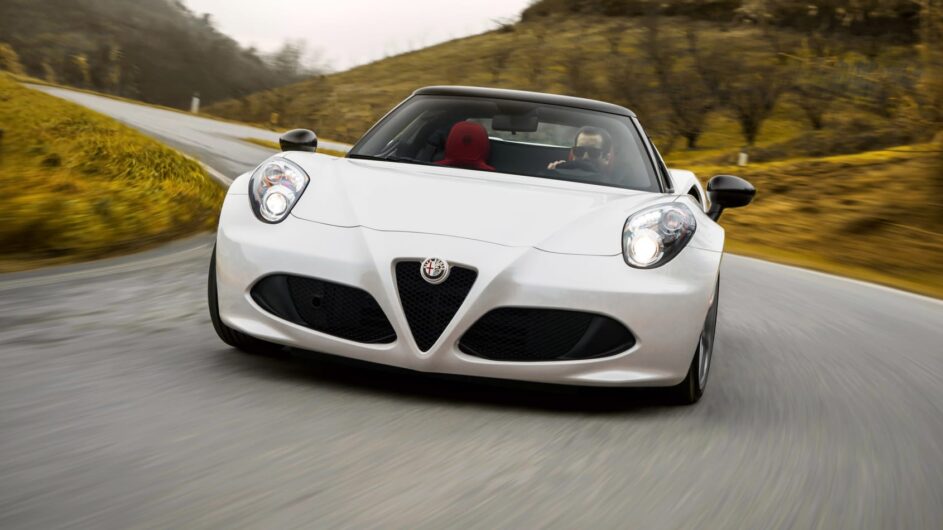
The encouraging vibe swiftly evaporates when, during the launch drive in Italy, we hit a long straight with some mild surface contours, as a worrying degree of camber sensitivity returns to derail stability and defeat even the most nuanced attempts to keep the car tracking straight.
More unwelcome 4C foibles join in on what should be a riotous blast on a road that zig-zags into the hills. The Spider romps to the top at an eye-watering lick, but in a series of borderline loony lunges reliant on sky-high reserves of grip and braking power, the laggy engine response and over-zesty mid-range make it impossible to achieve anything like a satisfying rhythm. Again, the more modestly-specced car seems marginally more relaxed without sacrificing anything appreciable in grip.
Interior and tech
The 4C’s cabin might come as a shock to someone dropping $75,000 on a sports car. ‘Rudimentary’ is a polite way of describing it, ‘cheap looking’ is a less kind but equally descriptive term. It doesn’t have the stripped-down appeal of a Lotus Elise, so much as expanses of black plastic and a truly ugly two-spoke steering wheel.
It’s initially claustrophobic too, if less so in the Spider thanks to the redesigned rear panel and, should the mood take you, the absence of a roof. And there are neat touches to be found – the seats can be specified in different hues of leather, which immediately brightens the cabin, there’s plenty of bare carbonfibre on display and the simple, digital instrument cluster looks modern and high-tech. The leather door pulls and aluminium pedals also exude the desired racy effects.
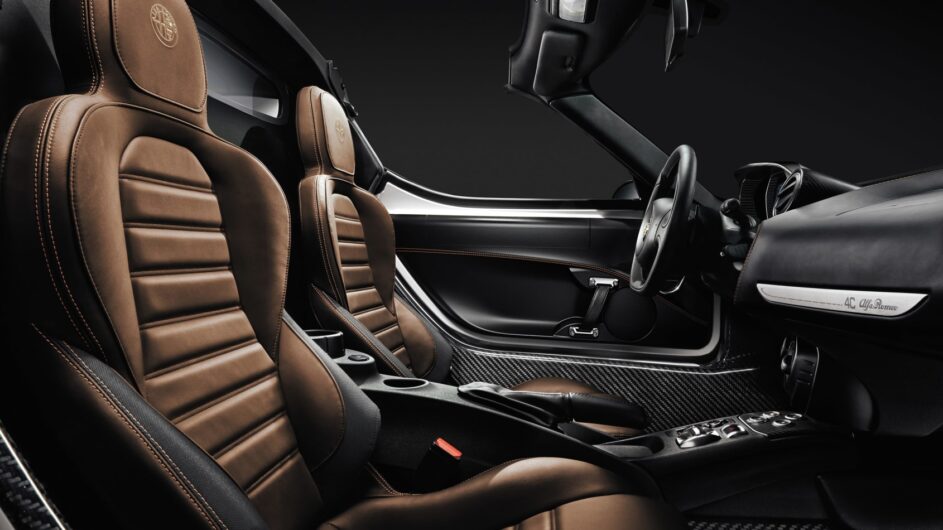
Given the Spider’s less hardcore nature, Alfa has also seen fit to equip it with a new Alpine hi-fi, deeper pile floor mats and day-to-day niceties such as parking sensors and cruise control. Leather with accent stitching and matching door cards will be available soon.
Design
Visual changes between Spider and Coupe are minimal, but not unwelcome. That the Spider removes a section of the roof is not a surprise, but the resulting effect suits the style of the car. Spiders also get an unpainted carbonfibre windscreen surround and rollover bar, which accentuates the lines of the bodywork. The roof itself is fabric and weighs 7kg. It’s possible to remove and refit in only a couple of minutes, and looks neat when in place. Sans roof, the cabin doesn’t become too windy.
More noticeable at a glance are the conventional headlights. The spider-eyed units on the Coupe, chosen for their light weight, are among the most divisive features on any modern vehicle and, while the projector-style xenon headlights on the Spider are less distinctive, they’re perhaps easier to stomach. These are now an option on the Coupe, too.
The engine cover is also unique to the Spider, replacing the glass panel of the Coupe with a traditional buttressed rear and a subtle rear spoiler.
This article originally appeared at evo.co.uk
Copyright © evo UK, Dennis Publishing

